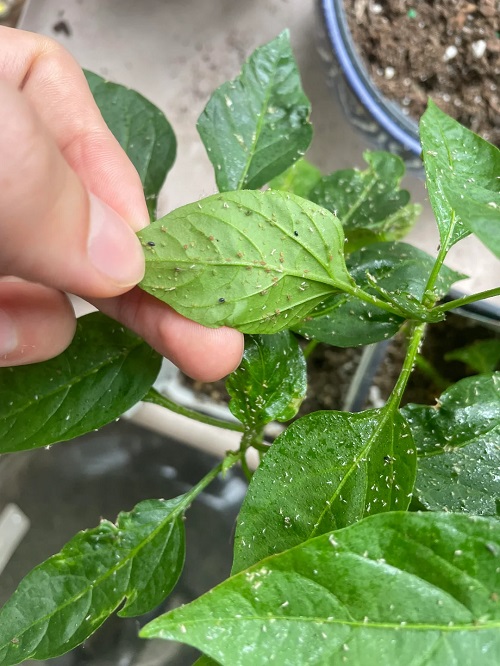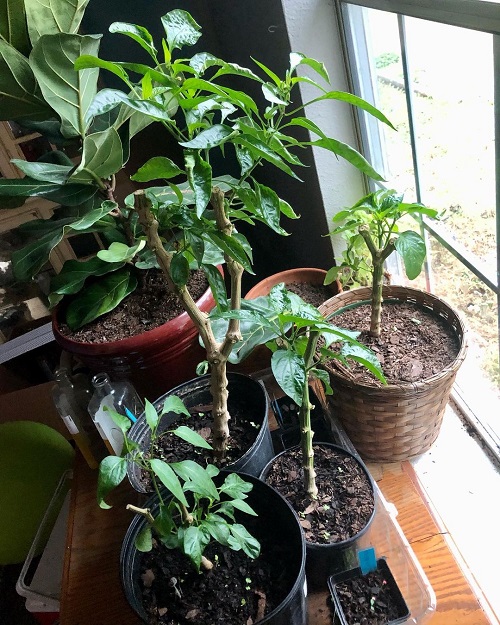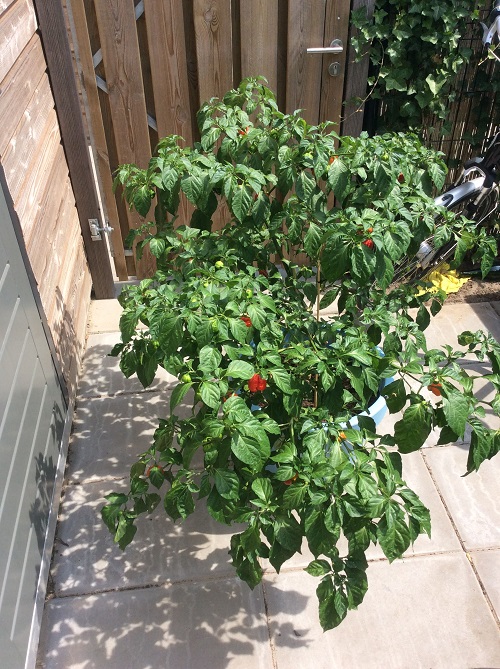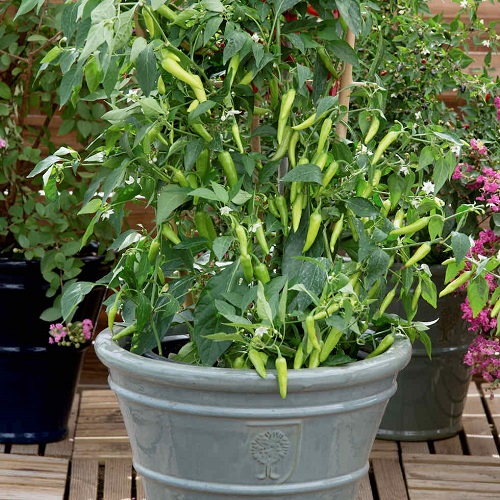It’s time to save our peppers from the cold! Learn How to Overwinter Pepper Plants to keep them healthy until spring and beyond!
Peppers are resilient perennials that can last for years with the right care. While they cannot tolerate frost, you can always shelter them until winter has passed. Here’s how to overwinter pepper plants to give them a head start for the next season.
Why Overwinter Pepper Plants?
Peppers, members of the nightshade family, grow year-round in warm climates. However, they aren’t designed to tolerate harsh winters. So, as the weather gets cooler, bringing them indoors or keeping them in a warm, controlled space helps their roots stay healthy.
Overwintering prepares them to spring back into action as the growing season resumes. Strong roots can absorb more water and nutrients, leading to more leaves, branches, and larger and more abundant pepper fruits.
Note: Hot pepper varieties are better suited for overwintering than sweet peppers. You can start with jalapeños and cayenne in the beginning or pick the right pepper variety for your region.
When to Overwinter Peppers
To avoid frost damage, begin overwintering your pepper plants before the first expected frost. Begin when temperatures drop to 45-50 F (7-10 C). Dips below 40 F (4 C) can stress them, and constant exposure to freezing temperatures will surely kill your plant!
If your potted peppers still bear fruits, bring them into a garage or covered patio on cold nights. This can extend the growing season by a few weeks until the colder weather sets in for good.
How to Overwinter Pepper Plants
1. Inspect for Pests & Diseases

Before bringing your peppers indoors, inspect them for signs of pest infestation, mold, fungal growth, etc. A few days before bringing them indoors, treat the plants with a mild pesticide or apply a neem oil spray.
You want a healthy overwintering environment for your peppers right from the start to ensure they revive and produce fruit in the coming season. This also protects other indoor plants from getting affected!
2. Humidity for Indoors
Especially during cold winters, indoor air can be a tad too dry for your pepper’s liking! Use a humidity tray or humidifier to help your plant stay cozy, adapt, and survive indoors. This also prevents leaf drop and helps the plant stay healthy through dormancy.
3. Smooth Transition to Indoors

Peppers are sensitive to sudden changes. Bringing them indoors out of the blue will shock and stress them out. Instead, introduce them to their new winter home slowly by placing them indoors for increasing periods before fully relocating them.
4. Dig up Outdoor Plants and Pot them
If your plants are in the ground, start by harvesting any remaining peppers and pruning back the plant, removing up to 50 to 70 percent of its growth to reduce its size. Then, carefully dig up the plant with a spade and create a hole about the size of the pot you’ll be using. Gently shake off the extra soil from the roots.
Lay the plant on its side and loosen any tight soil with your hands or water from a hose. Do this only if the root system is too big–trim the roots’ edges slightly, around 10-15 percent. Add a small layer of potting soil around the root, then slide the plant inside the container. Fill the pot with fresh soil, gently packing it around the base of the plant.
Water it and place in a cool indoor spot with filtered sunshine at 55–65 F (13-18 C). Check out this guide to growing hot chili peppers in containers for more!
5. Lighting and Dormancy

When overwintering peppers indoors, your plants won’t need much direct sunlight since they are home to rest and survive rather than produce fruit. Mellow sunshine from a window should be enough while your chilies are dormant.
However, if you wish to push your peppers to fruit in winter, you must prepare. To keep your pepper plants yielding through the cold, maintain relative humidity at about 50-70%, temperatures at 60-80 F (15-26 C), and use supplemental indoor grow lights apart from the sunshine.
Indoor Overwintering Tips for Peppers

When you overwinter peppers indoors, here are a few things to remember.
- When you pot peppers, keep only one plant in each pot so its roots have ample breathing room. Use a small pot (1 gallon) to keep it compact or a larger container if you have no space constraints—your pepper will adapt to either.
- Pick a spot in your house, basement, or garage that stays around 55-60 F (13-15 C) and gets bright, indirect sunshine.
- Do not fertilize your peppers during this time in winter, and water only when the soil is slightly dry, probably once in two weeks. If the soil is still damp, wait until it dries out before watering again.
- When the leaves begin to drop and die during dormancy, it’s time to prune your pepper plant. Trim it back to a few main Y-shaped branches. When the plant emerges from dormancy in spring, new branches will grow back.
Just a month before the last predicted frost in your area and the temperature is above 50 F (10 C), transfer the peppers to a much sunnier and warmer place. Water the plants as you usually do, and hope to see fresh growth in about a week.
How to Overwinter Pepper Plants Outdoors

If you live in USDA zones 9 and above—where winters are mellow—you can overwinter peppers outdoors. As long as there’s no frost, your peppers will grow. However, if night temperatures drop below 50 F, your peppers will show signs of cold stress.
So, to keep your peppers in the ground as the weather dips, you have a few ways to protect them. The first option is a cold frame—a portable greenhouse that allows light to filter through without exposing them to the cold. This won’t work in freezing situations.
You can also add small heaters or even string lights to help warm the air inside the frame. Another way is to heavily mulch around the base of the plant to insulate it from chilly weather and keep the roots warm and snug.
Floating row covers, tunnel or hoop houses, and frost sheets are all ways to protect and extend your peppers’ growing season. You could also cut them back and let your peppers go dormant and rest during the winter. Here are more ways to protect plants from frost!
Tip: Whether indoors or outdoors, ensure the soil doesn’t dampen during winter. Damp and wet soil will lead to root rot, killing your plant before spring arrives!
And that’s it! Follow our guide to keep your peppers thriving through winter, and once it’s spring, hit us up with updates on which ones survived and how!





Ralph…nice article re overwintering peppers. I will give it a try.